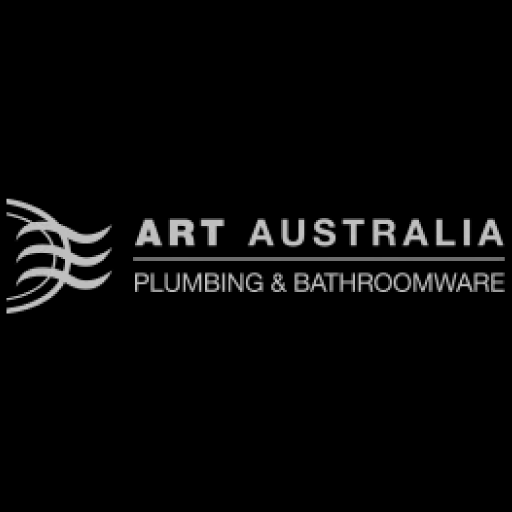How to Ensure Your Bathroom Meets Standards
Designing or renovating a bathroom is about more than just selecting attractive finishes—it’s a responsibility to ensure that the space is safe, functional, and compliant with Australian building standards. Whether you’re updating a private ensuite, managing a public facility, or fitting out a commercial project, understanding and meeting bathroom compliance requirements is critical for long-term performance and peace of mind.
In this guide, we explore the regulations that apply, the key decisions that influence compliance, and the role of certified fixtures and smart installation in creating a bathroom that meets all the right standards.
Why Bathroom Compliance Is Essential
Bathrooms are one of the most highly regulated areas of a building, and for good reason. They involve complex interactions between water, ventilation, electrical components, and accessibility considerations. Failure to comply with relevant codes can result in safety hazards, failed inspections, insurance issues, and, in commercial settings, breaches of the Disability Discrimination Act 1992.
More importantly, compliance ensures your bathroom serves its purpose over time. It helps prevent costly rework, protects vulnerable users, and supports the long-term value and usability of your property. A compliant bathroom is also more likely to pass inspection the first time and secure a valid compliance certificate, which is essential for legal handover or occupancy.
What Standards Apply in Australia?
Bathroom compliance is governed by several important codes and standards. The National Construction Code (NCC) provides the foundational framework, setting out mandatory requirements for structural safety, health, and amenity. This includes areas such as ventilation, drainage, and layout, along with slip-resistant flooring, which is recommended in wet areas to reduce fall risk.
For bathrooms that must accommodate people with disabilities or limited mobility, the AS 1428.1 standard outlines specifications that support accessible design, such as grab rail positioning, circulation zones, and fixture heights. These standards reflect broader universal design principles that aim to make environments usable for everyone, regardless of age or ability.
Water efficiency is another factor to consider. Fixtures such as taps, showers, and toilets must carry WELS ratings under the Water Efficiency Labelling and Standards scheme. Meanwhile, the AS 3740 waterproofing standard governs wet area waterproofing, ensuring that critical zones like showers and floors are sealed with a compliant waterproofing membrane to prevent long-term water damage.
Residential & Commercial Bathrooms: What’s the Difference?
In residential bathrooms, compliance focuses primarily on waterproofing, ventilation, fixture installation, and general safety. Although design is often more flexible, licensed professionals are still required to carry out specialised work. For example, a licensed contractor must install or certify the waterproofing membrane applied to your shower recess, and a proper building permit may be required for extensive structural work or major renovations.
In commercial settings, bathrooms are subject to far more stringent conditions. These spaces must support high usage, offer inclusive access, and adhere strictly to AS 1428.1. This affects everything from the height of a basin to the location of the toilet roll holder. Fixtures need to be tough, vandal-resistant, and easy to clean, especially in schools, hospitals, aged care homes, and retail centres.
For those working on public and commercial spaces, our range of accessible bathroomware products includes compliant fittings designed to meet these more rigorous requirements.
How Product Selection Impacts Compliance
Choosing the right products is one of the most effective ways to support compliance from the start. Products must meet Australian Standards, be certified for their intended application, and come with technical documentation that guides proper installation.
For example, grab rails, toilet backrests, and accessible mirrors must be installed according to specific measurements outlined in AS 1428.1. The Metlam range features products designed with compliance and durability in mind. Each fitting is backed by installation guides, making it easier for installers to meet both technical and legal requirements.
When it comes to water usage, specifying WELS-rated basin mixers, showers, and toilets allows you to meet environmental expectations and future-proof your space against regulatory changes.
Why Installation Must Be Precise
Even fully compliant products can fall short if they’re installed incorrectly. Installation is a critical component of bathroom compliance and must be carried out with precision, especially in accessible bathrooms, where millimetre-perfect placement often determines whether a space is usable or not.
Grab rails that are installed too high, doors that swing into restricted areas, or basins without the proper clearance can all render a bathroom non-compliant. If the waterproofing isn’t applied using a compliant waterproofing membrane, issues like seepage, rot, and mildew may arise later.
To avoid these outcomes, it’s important to engage a licensed contractor familiar with accessible design and wet area standards. They should follow the product’s installation guide exactly and supply a compliance certificate or statement on completion. Keeping a record of datasheets and work specifications will support future inspections and give peace of mind.
Avoiding Common Compliance Pitfalls
Mistakes during planning and installation often cause delays and increased costs. Using imported fixtures that aren’t tested for local conditions, for instance, is a common trap. Even when these look fit for purpose, they may not meet dimensions, pressure ratings, or certification requirements for Australia.
Another frequent issue is failing to leave adequate space for movement. Accessible bathrooms must allow for wheelchair manoeuvrability, not just in theory, but in measurable clearances that match the AS 1428.1 standard. Omitting compliant signage, failing to include slip-resistant flooring, or overlooking ventilation requirements can also lead to failed inspections and expensive remedial work.
Planning with compliance in mind from the beginning and using known, certified products remains the best way to avoid these costly mistakes.
What to Double-Check Before Project Completion
As your bathroom project nears completion, it’s worth taking a moment to revisit each component with a compliance mindset. Confirm that waterproofing has been completed by a qualified technician using a certified membrane system. Check that grab rails, mirrors, and basins have been installed at their correct heights and angles, and that WELS-rated fixtures are in place.
For commercial or public spaces, review signage, door swing directions, and clearances to confirm accessibility. Ensure ventilation systems meet NCC air-change requirements, and that all trades have issued documentation or certifications as needed.
When all the paperwork is in order and the space has been checked thoroughly, you’ll be better positioned to secure a final inspection pass and formal compliance certificate with confidence.
Designing Bathrooms That Meet & Exceed Standards
Compliant bathrooms don’t just meet legal requirements, they improve usability, safety, and long-term value. With careful planning, informed product choices, and accurate installation, you can create a bathroom that’s not only practical but also accessible, efficient, and resilient to future regulation changes.
We offer a wide range of certified bathroom accessories suitable for both residential and commercial applications. From accessible fittings to high-efficiency tapware, we’re here to help you deliver projects that tick every box, functionally, legally, and aesthetically.






